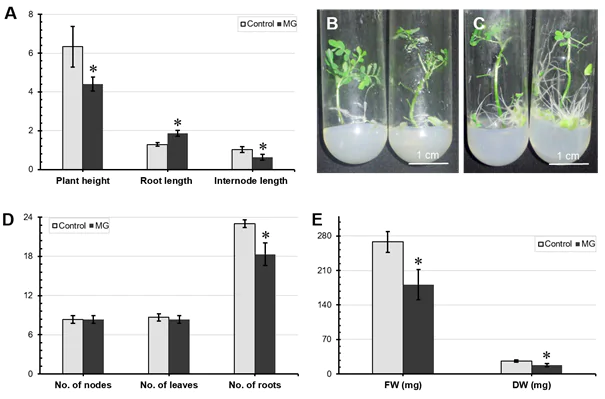
Project goals
Evaluate the impact of microgravity (MG) conditions on morphology, growth, physiology, gene expression related to secondary compound biosynthesis pathways and secondary compound accumulation in Panax vietnamensis, Catharanthus roseus and Phyllanthus amarus. The results from this project will be the scientific basis for the application of cell technology under MG simulation conditions in the production of secondary compounds in Panax vietnamensis, Catharanthus roseus and Phyllanthus amarus.
Main tasks of the project
(1) Determination of rotational speed and MG exposure time to cellular morphology, morphogenesis and growth of P. vietnamensis, P. amarus and C. roseus
(2) Determination of rotational speed and MG exposure time to cell physiological changes of P. vietnamensis, P. amarus and C. roseus such as pigments content, endogenous hormones, antioxidants enzyme activity, non-enzymatic antioxidants content, intracellular free radical content, cellulase enzyme and pectinase activity, ethylene biosythesis
(3) Determination of rotational speed and MG exposure time to plant cell accumulation of secondary compounds (saponin compounds in P. vietnamensis, accumulation of phyllathin in P. amarus and accumulation of alkaloids in C. roseus)
(4) Determination of rotational speed and MG exposure time to cell gene expression involved in secondary compound metabolic pathways in P. vietnamensis, P. amarus and C. roseus
(5) Determination of the change in growth and secondary compound accumulation in the subsequent stages of P. vietnamensis, P. amarus and C. roseus derived from MG under gravity condition (recovery phase)
(6) Establishing a protocol related to the application of plant cell technology under MG conditions in the production of secondary compounds biosynthesis in P. vietnamensis, P. amarus and C. roseus.
Project impact
Breakthrough technology applying microgravity simulation conditions as a stimulant to enhance the biosynthesis of secondary compounds in medicinal plants is a new direction in Vietnam and around the world. Mastering this technology will contribute to improving understanding of the beneficial effects of microgravity conditions on plants as well as exploiting the application of this problem in practice. Furthermore, we hope that the results from this project on the effects of microgravity conditions on morphogenesis, growth, physiology and secondary compound accumulation in medicinal plants will be valuable scientific data for the compilation of monographic books/chapters serving the teaching of Plant Biotechnology.









